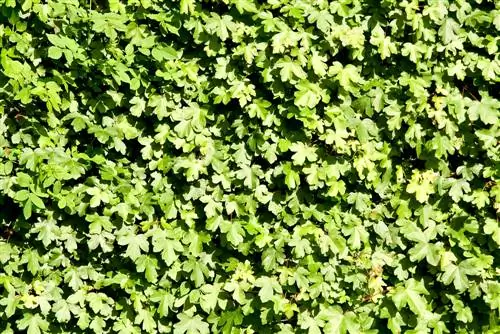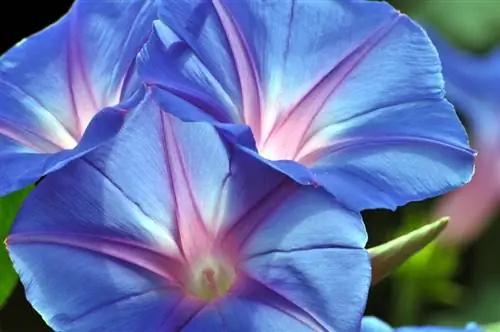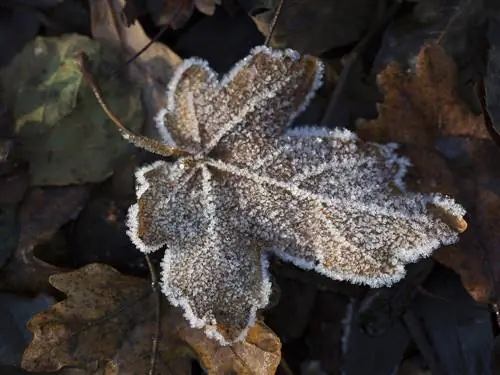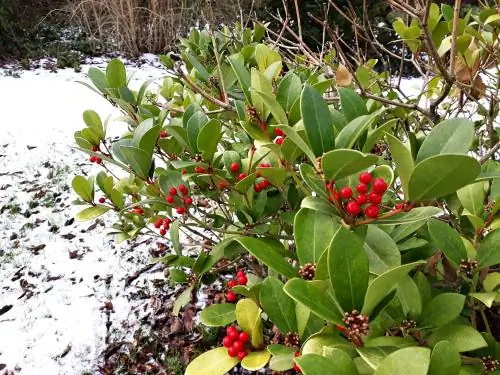- Author admin [email protected].
- Public 2023-12-16 16:46.
- Last modified 2025-06-01 06:02.
Since its election as Tree of the Year in 2015 drew attention to the field maple, the career of the little brother of the sycamore and Norway maple has been gaining momentum. The robust all-rounder has everything that hobby gardeners want from the perfect hedge plant. These instructions will guide you step by step through the correct planting and care of a field maple hedge.

How do I plant and care for a field maple hedge?
A field maple hedge offers robust privacy and requires little maintenance for gardeners. Plant root crops in autumn, choose suitable location conditions and trim the hedge regularly to ensure a well-groomed appearance.
Planting time in autumn scores with advantages
A long hedge or property fence requires the purchase of numerous field maple bushes, associated with correspondingly high costs. Saving hunters invest in inexpensive, substrate-free root products. This growth habit is planted between October and April as long as there is no frost. In addition to the cost savings, hobby gardeners with limited free time appreciate that planting can take place outside of the main season.
Bale and container goods cost significantly higher prices because they can be placed in the ground all year round - even in summer. Anyone who decides to plant in perfect weather often underestimates the high watering requirements in the middle of the peak season. It is not uncommon for the expensive field maple hedge to languish due to drought stress.
Selection of location subject to minimal restrictions
Field maple lives up to its reputation as a robust all-rounder right from the choice of location. The list of unsuitable conditions is much shorter than the catalog of suitable site conditions. Acer campestre only becomes weak in full shade, in acidic peat soil and under the influence of permanent waterlogging.
A field maple hedge achieves its optimum in a sunny to semi-shady location in any normal garden soil, which can be calcareous. Under these ideal conditions, the hedge reaches the desired height within a short time for reliable privacy protection.
Planting a field maple hedge skillfully - this is how you do it right
First mark the planned route of the hedge with a planting line. Lay out the young plants along the line at the correct planting distance. For root crops, dig a continuous planting trench. For container or bale goods with a planting distance of 30 cm, individual pits with twice the volume of the root ball are sufficient. Here's how to proceed professionally step by step:
- During the excavation work, soak the roots of the bushes in water at the same time
- Enrich the excavation with compost (€10.00 on Amazon) and horn shavings
- Loose up the bottom of the trench with a rake for better rooting
- Remove the container, do not remove the bale rope, cut off damaged roots on the root product
- Insert field maple in a ditch or pit while maintaining the previous planting depth
- Just open the bale cloths beforehand as they will rot later
Tamp down the soil and water generously. Then spread a layer of leaves or bark mulch, which serves as frost and moisture protection if planted before winter. Finally, cut back all shoots by at least a third to compensate for the lost root mass.
Avoid the 3 most common mistakes when planting - what you should pay attention to
If there are complaints about growth problems after planting a field maple hedge, the following 3 beginner mistakes are behind the problems:
- For root or balled goods, no pruning was carried out by a third in the last step of planting
- The bale cloth was removed before planting
- Poor water supply
During the harvest in the tree nursery, a large proportion of root mass is lost in root and balled goods. The shoots' supply of water and nutrients is reduced accordingly. If there is no compensation through adequate pruning, growth problems for the field maple hedge are inevitable. Removing the bale cloths entails similar difficulties.
Modern drip irrigation does not meet the high water requirements of a field maple hedge after planting. The young bushes can only root vitally if they are watered abundantly and generously. This not only applies to the planting day itself, but is of essential relevance for the following weeks.
Uncomplicated care - cutting is the be-all and end-all
If you follow these recommendations for professional planting, the care of your field maple hedge will be reduced to a minimum in the following years. Strongly rooted Massholder bushes only require irrigation water when the summer is dry. The nutrient supply is limited to a one-time application of compost with comfrey manure in autumn or spring.
The pivotal point in the care program is pruning. The rapid growth in the first few years requires you to use the scissors on at least two occasions to ensure that your field maple hedge maintains a well-groomed appearance. Cut back the hedge while the sap is dormant in autumn or late winter and thin out the dead wood. The best time for a light pruning is shortly after St. John's Day. To protect breeding birds, pruning in summer is limited to the regrown shoot tips.
Tip
Numerous classic hedge shrubs are not suitable as fencing and privacy screens for the family garden. Thuja, yew or privet contain toxic substances that are harmful to children and pets. Not so with the local field maple. In contrast to the majority of its counterparts, an Acer campestre does not use toxic ingredients.






